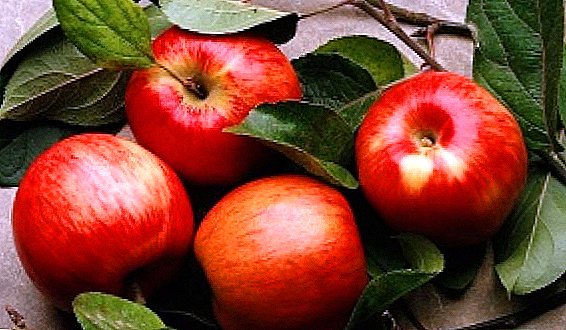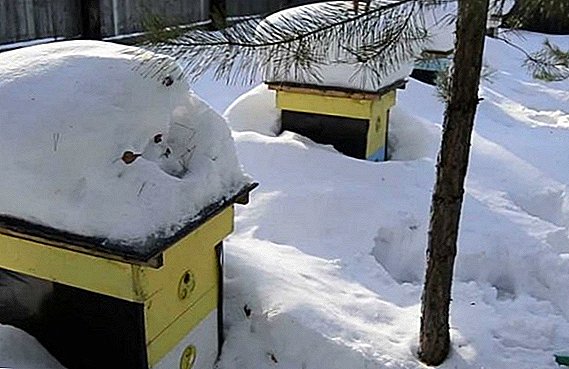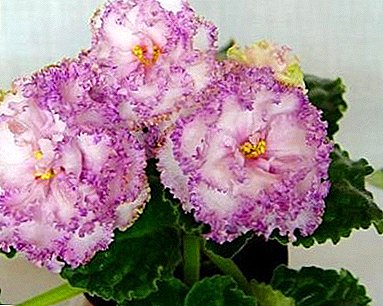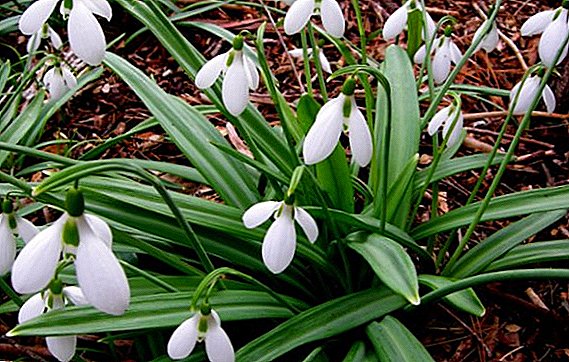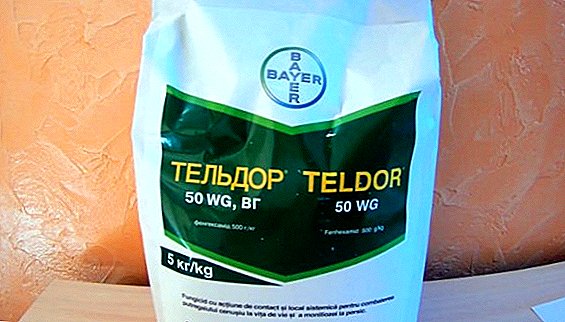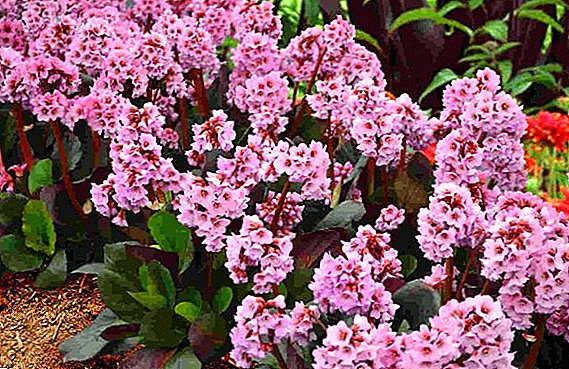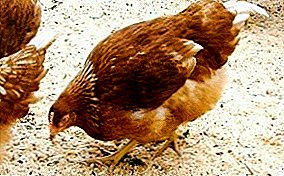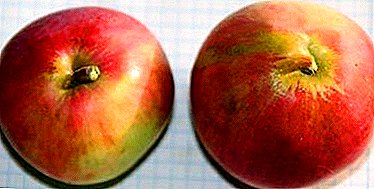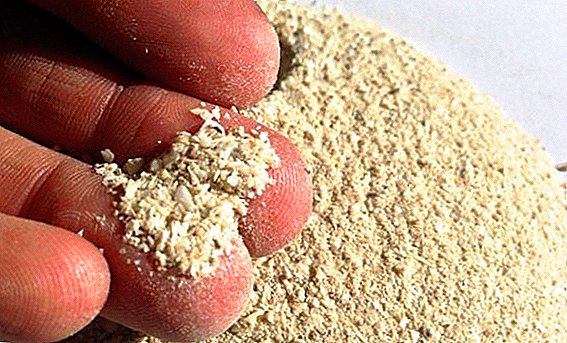 In conditions of a limited land plot or a flowerpot without regular fertilizing, it is practically impossible to achieve a full-fledged growing season for indoor or garden plants. Many experts for the enrichment of depleted soils recommend, in addition to the classical solutions from mullein and chicken manure, special organic powders. What is bone meal, what role does it play in the development of vegetation, where and when the substance should be used and how to do it correctly - we will tell about all this later in the article.
In conditions of a limited land plot or a flowerpot without regular fertilizing, it is practically impossible to achieve a full-fledged growing season for indoor or garden plants. Many experts for the enrichment of depleted soils recommend, in addition to the classical solutions from mullein and chicken manure, special organic powders. What is bone meal, what role does it play in the development of vegetation, where and when the substance should be used and how to do it correctly - we will tell about all this later in the article.
What do they do
Bone meal is a crumbly, light powder with high moisture content due to animal fat. The substance is derived from the processing of bones.  The main suppliers of raw materials for the manufacture of bone meal are meat processing plants. Also for processing go veterinary confiscated and carrion. All material must be fresh and not infected.
The main suppliers of raw materials for the manufacture of bone meal are meat processing plants. Also for processing go veterinary confiscated and carrion. All material must be fresh and not infected.
Important! Given the slow splitting of the constituent components, bone meal is recommended to make every 2-3 years.Initially, it is crushed into cartilage, then dried and ground again with the help of special equipment. Commercially, the substrate is made in 3 ways. The most common and simple - the usual grinding of raw animal waste. But its disadvantage is in the lowest concentration of phosphorus.
Another technology is the initial steaming of raw materials. This allows you to slightly increase the amount of micronutrient.  But the highest rates can be achieved with the initial degreasing of bones. The latest product version is considered the highest quality.
But the highest rates can be achieved with the initial degreasing of bones. The latest product version is considered the highest quality.
At home, you can also make a similar fertilizer, especially if there are horns, bones, hooves of domestic animals, fish and poultry. To do this, you need to rinse the raw material and chop it into small pieces.
Important! Consider that the procedure takes a lot of time and requires good ventilation, so it is better to carry out all work on the street, on a specially equipped stove.Then the material needs to be laid out in a cast-iron cauldron, pour water and cook until softened. The cooled raw materials are subject to crushing.

Where used
In agriculture, this organic powder is quite versatile. It is widely used as a feed additive in animal husbandry and as a fertilizer in crop production.
The substance is quite suitable for feeding garden, decorative, garden, flower, greenhouse and pot plants.
You will be interested to know about such organic fertilizers as nettle, eggshells, onion peels, banana skins, and whey.The use of bone meal in horticulture, in flower beds and in the garden is justified by the presence of a large number of nitrogen and phosphorus components. Within six months after adding the substance, the soil on the site becomes nourishing and soft.
In addition, it does not oxidize, even when using mulch suitable for this process.  Substrate use is appropriate in the period of spring or autumn soil preparation for planting crops. In the berries and the garden, experts advise to first disperse the fertilizer and only then carry out a deep digging.
Substrate use is appropriate in the period of spring or autumn soil preparation for planting crops. In the berries and the garden, experts advise to first disperse the fertilizer and only then carry out a deep digging.
In the garden per square meter will need to make within 200 g of powder, the dosage can be adjusted depending on the physico-chemical characteristics of the soil.
Did you know? Meat and bone meal as fertilizer was used even by primitive tribes. It is believed that it was they who discovered its beneficial properties by accidentally finding that the best crop grows in the place of a fallen animal after the decomposition of its remains.Some owners share the experience of making bone meal on lawn grass. In such cases, she always thanks with a bright, thick and rich green carpet. Other gardeners and flower growers are advised to add powder to nutritious mixtures for plants.
 This is done in order to enrich the feed solution with phosphorus and potassium. In crop production, the main task of bone meal is to improve the development of culture, the rapid ripening of fruits and increase yields.
This is done in order to enrich the feed solution with phosphorus and potassium. In crop production, the main task of bone meal is to improve the development of culture, the rapid ripening of fruits and increase yields.Benefits
It would seem that powdered fertilizer obtained from animal bones is limited to micronutrients and cannot compete with other mineral complexes. That is, it is only an additional component in the supplemental solution.
Important! Bone meal is never the cause of plant disease. A strict guarantee of veterinary control of raw materials and its initial sterilization can be considered a guarantee of safety.But all these erroneous beliefs dispelled by experts. According to agronomists, bone and bone and bone meal may well act as an independent fertilizer, as manufacturers indicate in the instructions for use.

Compared to other substances, the substrate is valued for:
- slow process of splitting chemical compounds, which ensures long-term effects on the plant and uniform saturation with nutrients;
- harmlessness - the substance can be applied even several weeks before the harvest (moreover, professionals even advise making powder 14 days before the fruit ripens to improve their taste characteristics);
- the ability to deoxidize soils, so phosphoazotin in limited quantities is applied to areas with an alkaline pH;
- the ability to improve the vegetation of plants at all stages (intensive biomass buildup, flowering, the formation and maturation of fruits).
Did you know? A kilogram bag of bone meal in Ukraine costs around 10-20 hryvnia.
Types and composition
Scientifically, bone meal is called "tricalcium phosphate", which is due to the main components of the powder. It contains large amounts of calcium and phosphorus.  The additional components are fat, glue, phosphoric acid, nitrogen, sodium, chlorine, sulfur, the percentage ratio of which varies between 1.5-10%.
The additional components are fat, glue, phosphoric acid, nitrogen, sodium, chlorine, sulfur, the percentage ratio of which varies between 1.5-10%.
It will be useful for you to learn about dolomite and fish meal.Depending on the technology of preparation and processing of bone material and the composition of bone meal, there are several types of it:
- Regular - is the cheapest, because it is very easy to manufacture, does not require additional processing of raw materials before grinding and contains only 15% of phosphorus.
- Steamed - as a result of the preliminary heat treatment of the material, manufacturers manage to obtain 25% of phosphorus from it.
- Fat-free is the most expensive and valuable type of all existing, since the amount of phosphorus in it is 35%.

How to apply fertilizer
For fertilizer vegetation, you can use the root and foliar method. In most cases, the powder is simply embedded in the ground during its preparation for planting. Experts also advise them to fertilize garden, garden and pot crops in the period of vegetative development.
Did you know? Completely bone meal decomposes only six months.Depending on the type of vegetation and soil characteristics, it is done this way:
- On the lawns scatter dry powder at the rate of 200 g per 1 sq. Km. m area (in acidic areas, the amount of fertilizer is desirable to double).
- For indoor and garden garden plants, it is recommended to add dry matter in the ratio of 1: 100, and the liquid solution is prepared from 1 kg of flour and 2 buckets of hot water. In the latter case, the suspension is left to infuse for a week, stirring daily. Then it is passed through a filter and topped up with water so that a total of 380 l of liquid is obtained
- For seedlings of vegetable crops, one or two tablespoons of powder is added directly to the wells.
- When planting berry specimens in each pit to bring up to 70 g of the substance in the spring and up to 120 g in the fall.
- Under bulbous flower cultures (tulips, gladioli, daffodils, lilies) it is recommended to add 30 g of substance to each well.

Storage conditions
Manufacturers advise you to store bone meal in rooms protected from damp, heat and direct sunlight. Purchased packaging is desirable to lay in a well-ventilated shed, where there are no rodents or any other pests. To do this, you need to find a shelf inaccessible for children and animals.
Important! For cacti, azaleas, rhododendrons, and other plants that prefer an acidic environment, bone meal is contraindicated.If we are talking about homemade substrate, it should be packaged in paper or fabric bags. Note that under the influence of ultraviolet powder becomes toxic.
This is due to internal chemical reactions in phosphozotine, which provokes a high temperature. When decomposed, fat becomes poisonous. It is advisable to periodically check the condition of the flour, mix and dry it.  Knowing what and how bonemeal is made, you can be confident in its biological and chemical safety for its vegetation. Feel free to feed the flowers, vegetables, berries, fruits with this powder, and they will thank you for quality fruits and decorations. We hope our recommendations will help you with this.
Knowing what and how bonemeal is made, you can be confident in its biological and chemical safety for its vegetation. Feel free to feed the flowers, vegetables, berries, fruits with this powder, and they will thank you for quality fruits and decorations. We hope our recommendations will help you with this.


